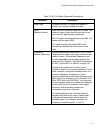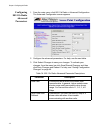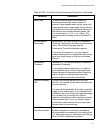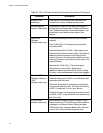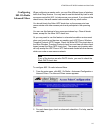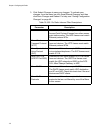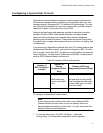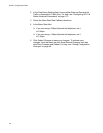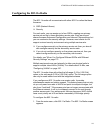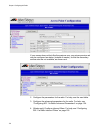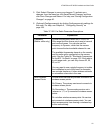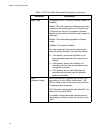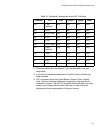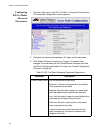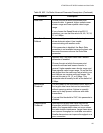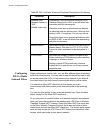
AT-WA7500 and AT-WA7501 Installation and User’s Guide
119
Configuring the 802.11a Radio
The 802.11a radio will communicate with other 802.11a radios that have
the same:
SSID (Network Name)
Security
For each radio, you can assign up to four SSIDs, creating one primary
service set and up to three secondary service sets. Each service set
shares the same Advanced Configuration and Inbound Filters settings, but
you can customize the security settings. However, most clients do not
support a mixed security environment using multiple service sets:
If you configure security on the primary service set, then you should
also configure security on the secondary service sets.
If you do not configure security on the primary service set, then you
cannot configure security on the secondary service sets.
For details, see “When You Configure Different SSIDs with Different
Security Settings” on page 172.
Multiple service sets are used primarily to allow one physical radio to
support multiple virtual LANs (VLANs). For details about VLANs, see
“Configuring VLANs” on page 187.
The 802.11a radio ships with either the full-range (5.15 to 5.35 GHz)
option or the mid-range (5.25 to 5.35 GHz) option. The full-range option
can only be used indoors and with the integrated antenna.
If you configure an 802.11a radio as a master radio, it provides
simultaneous master and station support. This feature means that not only
do you only need one radio in WAPs and point-to-multipoint bridges, but
also it can “heal itself.” If the access point can no longer communicate with
the Ethernet network, it will try to wirelessly connect to the root through
another access point. Any access point that may become a WAP should
have a root priority set to 0 and have a secondary LAN bridge priority.
To configure the 802.11a radio
1. From the main menu, click 802.11a Radio. The 802.11a Radio screen
appears.



